第92章 INDIAN MYTHS OF THE ORIGIN OF THE WORLD AND OF MAN
In the Puranas creation is a process renewed after each kalpa, or vast mundane period. Brahma awakes from his slumber, and finds the world a waste of water. Then, just as in the American myths of the coyote, and the Slavonic myths of the devil and the doves, a boar or a fish or a tortoise fishes up the world out of the waters.
That boar, fish, tortoise, or what not, is Brahma or Vishnu. This savage conception of the beginnings of creation in the act of a tortoise, fish, or boar is not first found in the Puranas, as Mr.
Muir points out, but is indicated in the Black Yajur Veda and in the Satapatha Brahmana. In the Satapatha Brahmana, xiv. 1, 2, 11, we discover the idea, so common in savage myths--for example, in that of the Navajoes--that the earth was at first very small, a mere patch, and grew bigger after the animal fished it up.
"Formerly this earth was only so large, of the size of a span. Aboar called Emusha raised her up." Here the boar makes no pretence of being the incarnation of a god, but is a mere boar sans phrase, like the creative coyote of the Papogas and Chinooks, or the musk-rat of the Tacullies. This is a good example of the development of myths. Savages begin, as we saw, by mythically regarding various animals, spiders, grasshoppers, ravens, eagles, cockatoos, as the creators or recoverers of the world. As civilisation advances, those animals still perform their beneficent functions, but are looked on as gods in disguise. In time the animals are often dropped altogether, though they hold their place with great tenacity in the cosmogonic traditions of the Aryans in India. When we find the Satapatha Brahmana alleging "that all creatures are descended from a tortoise," we seem to be among the rude Indians of the Pacific Coast. But when the tortoise is identified with Aditya, and when Adityas prove to be solar deities, sons of Aditi, and when Aditi is recognised by Mr. Muller as the Dawn, we see that the Aryan mind has not been idle, but has added a good deal to the savage idea of the descent of men and beasts from a tortoise.
Muir, 2nd edit., vol. i. p. 52.
Muir, 2nd edit., vol. i. p. 54.
See Ternaux Compans' Nouvelles Annales des Voyages, lxxxvi. p.
5. For Mexican traditions, "Mexican and Australian Hurricane World's End," Bancroft, v. 64.
Another feature of savage myths of creation we found to be the introduction of a crude theory of evolution. We saw that among the Potoyante tribe of the Digger Indians, and among certain Australian tribes, men and beasts were supposed to have been slowly evolved and improved out of the forms first of reptiles and then of quadrupeds. In the mythologies of the more civilised South American races, the idea of the survival of the fittest was otherwise expressed. The gods made several attempts at creation, and each set of created beings proving in one way or other unsuited to its environment, was permitted to die out or degenerated into apes, and was succeeded by a set better adapted for survival.